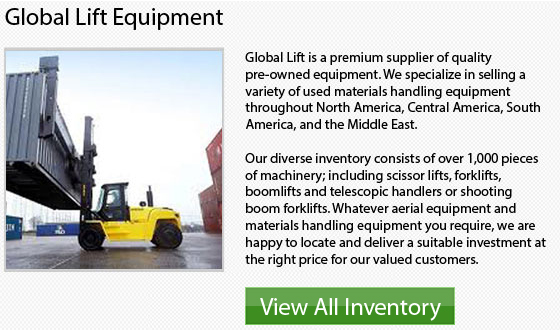
The following add-ons are really helpful for narrow aisle lift trucks:
Side shift: The side shift option permits the movement of the load laterally without having to move the truck. This enables loads to be placed with a lot more precision.
Tilt mast: The optional tilt mast allows the forks to shift both forwards and backwards. This is perfect in cases where loads aren't entirely level. To gain greater stability when moving a truck that is loaded, the mast could be tilted backwards.
Extendable forks: The option of extendable forks helps the "reach" of the lift truck to extend for stacking pallets one in front of the other, known as "double-deep" loading.
Operator platforms: Operator platforms enable some NA forklifts to raise and lower the operator whilst the forks are being raised or lowered. This offers utmost visibility and control when dealing with loads at heights of 6 m to 9 m.
Forklift on a Ramp
Operators need to be well taught and should be tested and qualified. It is important for anybody operating a forklift to be very knowledgeable regarding safety regulations and issues. Operators must know how to make adjustments on uneven surfaces or in cases where the weight of the load changes the center of gravity. Safety rules include the safe operation of a lift truck on a ramp, which is always happening as the operator will typically need to drive down and up ramps to be able to load and unload containers.
Tips for Operating a Forklift on a Ramp
1 While approaching and driving up and down the ramp, drive slowly. The risk of accidents is higher while driving fast since this can upset the machine's center of gravity.
2 When not carrying a load, drive the forklift in reverse while moving up an incline on a ramp.
3 Drive forward while moving down an incline on the ramp with no load.
4 While moving up or down a ramp when carrying a load, tilt the forks back a little to shift the load's center closer to the front of the equipment.
5 To make the load more steady, drive forward up a ramp while carrying a load.